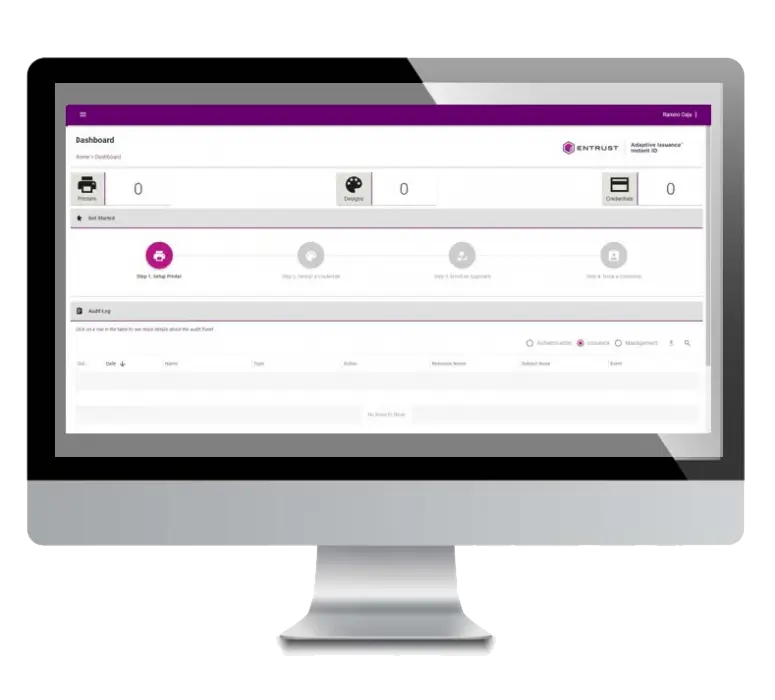
Hotel Key Card Printing – Common Questions Answered
Back To Blog Facebook X LinkedIn Introduction When running a hotel, every detail matters — and that includes your key
Printed Plastic Cards
Printed Key Tags
Printed Gift Cards
Printed Loyalty Cards
Custom Printed
Personalised Lanyards
Custom designed lanyards with choice of colour, attachment, and materials. All our lanyards come with a price match guarantee and free artwork design.
Entrust Instant ID Software is a complete solution for designing, printing, and managing ID credentials with speed and security.
Learn More


Easy-to-use ID card software for small businesses and schools. CardPresso offers templates, barcodes, and magnetic stripe support. Compatible with most card printers..
Learn More
MIFARE® cards are among the most widely used contactless smart cards in the world. From access control to public transport, these cards offer a secure and efficient way to store and exchange data. This guide will walk you through the basics of MIFARE technology, its types, and where it is commonly used.
MIFARE is a brand of RFID-based smart cards developed by NXP Semiconductors. These cards use Near Field Communication (NFC) technology to enable wireless communication with card readers. Because of their reliability and versatility, MIFARE cards are used in various industries, including security, transportation, and event management.
MIFARE Classic cards are one of the first and most commonly used smart card types under the MIFARE family. Operating on a 13.56 MHz frequency, it provides basic encryption, making it suitable for low-security applications. However, due to known security vulnerabilities, it is gradually being replaced by more secure alternatives. Despite this, it remains widely used in public transport systems, event ticketing, and other applications where security is not the primary concern.
MIFARE DESFire cards are designed for secure transactions and high-security applications. It supports AES-128 encryption, ensuring strong protection against unauthorized access. This type of card is widely used in corporate access control, electronic passports, and government-issued identification cards. Its advanced security measures make it an ideal choice for organizations that require robust authentication and data protection.
MIFARE Ultralight cards are a cost-effective solution tailored for temporary or disposable use cases. These cards have limited memory capacity but are sufficient for applications such as event ticketing and single-use transit passes. They are widely used in short-term solutions where data storage needs are minimal but affordability is a priority.
MIFARE Plus serves as a security-enhanced replacement for MIFARE Classic. It offers AES encryption to prevent unauthorized access, making it more secure while remaining cost-effective. This type of card is suitable for organizations that need a balance between affordability and security, such as universities, public transportation systems, and corporate access control.
MIFARE cards are used in various sectors due to their convenience and security. Here are some of the most common applications:
Related Posts

Hotel Key Card Printing – Common Questions Answered
Back To Blog Facebook X LinkedIn Introduction When running a hotel, every detail matters — and that includes your key

The Ultimate Guide to Custom Gift Card Printing for Businesses
Back To Blog Facebook X LinkedIn Introduction In today’s competitive market, custom printed gift cards are more than just a
Smart 31s Card Printer
Smart 51S Printer
Smart 5D Printer
Zebra ZC100 Card Printer
Zebra ZXP7 Printer
Evolis Primacy Printer
Evolis Zenius Card Printer
Evolis Pebble Card Printer
Zebra Printers
Magicard Printers
Fargo Printers
Entrust Printers
Pointman Ribbons
Pointman Printers
Zebra ZC100 Ribbons
Zebra ZXP1 Ribbons
Zebra ZXP3 Ribbons
Zebra ZXP7 Ribbons
Zebra ZXP9 Ribbons
Entrust Sigma DS1 Ribbons
Entrust Sigma DS2 Ribbons
Entrust Sigma DS3 Ribbons
Card Holders
Paxton Cards
Mifare Cards
Pointman Ribbons
Magicard 300 Pro Bundle
Zebra ZC350 Ribbons
Lanyard
Lanyard Dublin
Lanyards & Card Holders
Magicard Pronto 100 Ribbons
Magicard 300 Ribbons
Magicard 600 Ribbons
Magicard Rio Pro 360 Ribbons
Magicard Ultima Ribbons
Evolis Badgy Ribbons
Evolis Primacy Ribbons
Datacard SD260 Ribbons
Evolis Zenius Ribbons
Datacard SD360 Ribbons
Datacard SD460 Ribbons
Smart 21 Ribbons
Smart 30 Ribbons
Smart 31 Ribbons
Smart 50 Ribbons
Smart 70 Ribbons
Smart 51 Ribbons
Datacard SP25 Ribbons
Fargo DTC4250 Ribbons
Card Printing Software
Easybadge Card Design Software
Custom RFID Cards
Printed Eco Cards
Asset Tags
Best ID Card Printers 2023
Printed Plastic ID Cards
PVC Card Printers
Printed Membership Cards
Gift Card Printing
Plastic Gift Cards
Gift Card Printers
Gift Card Technology
Gift Cards For Business
Gift Card Manufacturers
Print Plastic Gift Cards
Mifare Classic Cards
Mifare Desfire Cards
Paxton Access Readers
Paxton Net2 Cards
Paxton Net2 Proximity Cards
Paxton Net2 Fobs
Paxton Net2 Key Fobs
Paxton Fobs
Custom Plastic Gift Cards
Gift Card Printing
Gift Cards For Business
Loyalty Card Printing
Hotel Key Card Wallets
Gift Card Wallets
Plastic Card Wallets
Sustainable Hotel Keycards
Hotel Keycards
ID Card Printer
Plastic Card Printers
Card Printers
Library Membership Cards
Bone Tag Labels
You can see how this popup was set up in our step-by-step guide: https://wppopupmaker.com/guides/auto-opening-announcement-popups/